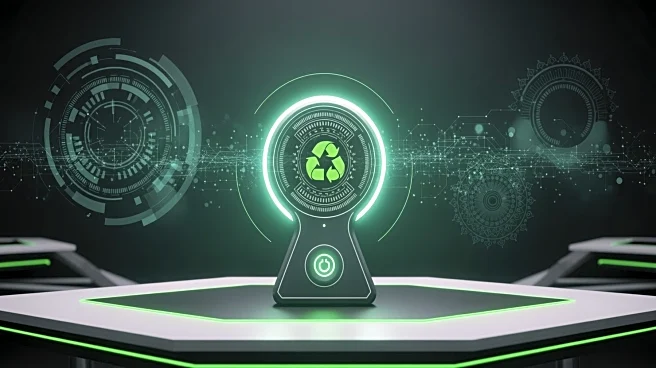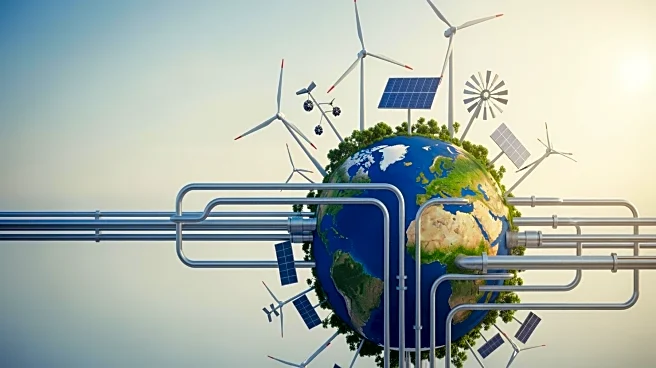What's Happening?
Researchers at the University of Science and Technology Meghalaya (USTM) have developed a method to convert discarded tea leaves into bioethanol, a clean and renewable energy source. The study, published in Springer Nature's journal Biomass Conversion
and Biorefinery, highlights the potential of spent Camellia sinensis leaves, commonly known as used tea waste, to serve as an alternative to fossil fuels. The research utilizes an iron-zinc oxide nanocatalyst to accelerate the conversion process, achieving a 75% yield of bioethanol. This innovative approach not only enhances efficiency but also reduces waste, contributing to India's renewable energy goals.
Why It's Important?
The development of bioethanol from tea waste represents a significant advancement in sustainable energy solutions, particularly for India, one of the largest tea producers globally. By utilizing an abundant waste resource, the research addresses the urgent need for eco-friendly fuels amidst rising greenhouse gas emissions and depleting energy reserves. This method offers a promising alternative to conventional biofuel production, which often relies on food crops, thereby supporting circular, low-carbon systems. The successful conversion of tea waste into energy could significantly impact India's renewable energy landscape, reducing reliance on fossil fuels and promoting environmental sustainability.
What's Next?
The findings suggest that even small-scale conversion of tea waste could contribute significantly to renewable energy goals. As the research progresses, there may be opportunities for scaling up the process and integrating it into broader energy production systems. Stakeholders in the energy sector, including policymakers and industry leaders, may explore partnerships to commercialize this technology. Additionally, further research could focus on optimizing the conversion process and exploring other waste materials for bioethanol production, potentially expanding the scope of renewable energy sources.
Beyond the Headlines
This innovation underscores the importance of local solutions to global challenges, demonstrating how everyday resources can be leveraged for sustainability. The use of advanced nanotechnology in this process highlights the intersection of scientific innovation and environmental stewardship. As the world seeks to transition to cleaner energy sources, such research initiatives could inspire similar projects globally, fostering a culture of sustainability and resourcefulness.













